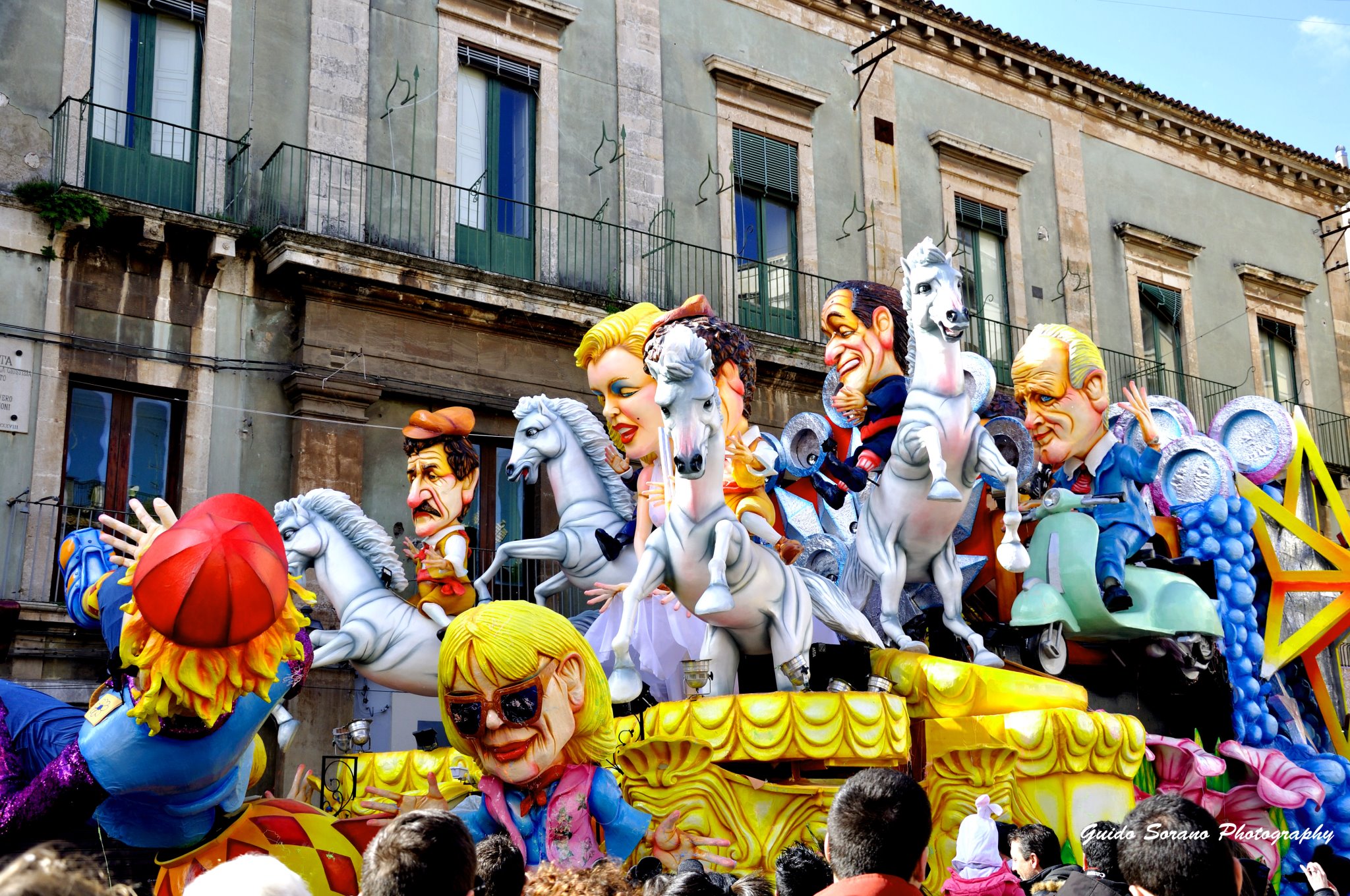
Carnival in Sicily: history, festivals and traditions
The Carnival celebration in Sicily has very ancient origins and is a heartfelt event that no one wants to miss, from adults to children. But what is the origin of this tradition? Where is the celebration? Let’s discover together the long history of the most eclectic event of the year, between celebrations and interruptions due to pandemic from Covid.
Origins: between the sacred and the profane
Carnival is a festival with ancient origins that many trace back to the Dionysian rites of the Athenian festival of the Antesterias, celebrated in late February and early March. On that occasion seals were removed from barrels and wine was drunk at banquets in honor of the god Dionysus. For the next three days, then, the float carrying a masked citizen representing the god of wine and intoxication would circle the streets.
In modern times, the festival is linked to Catholic tradition and the Latin term “Carnem levare,” or the ecclesiastical ban on eating meat during the Lenten season.
The earliest records of the Sicilian Carnival date back to 1600 and concern the city of Palermo And at one time the festival lasted for more than a month. Over the years, preparation for the Carnival has become a real ritual: from setting up decorations to costumes and masks. Like the historical Sicilian ones of the “Jardinara (gardeners) and of the “Varca” known in the province of Palermo or the typical Catania ones of the
“Briganti” e “Cavallacciu”. Then there was never a shortage of parodies of “Abbati,” “Dutturi,” “Baruni”
and of the powerful, because at Carnival you know-every joke counts!
What are the most beautiful carnivals?
Amid parades of floats, ancient and modern masks, dancing and singing: this is how some of Sicily’s small towns dress up and transform themselves for the Carnival.
The Carnival of Acireale is considered one of the most beautiful and ancient in all of Sicily and beyond. A document from 1612 also mentions the custom of playing orange and lemon toss (a tradition lost here, but still alive within the Ivrea Carnival). Alongside the papier-mâché and flowered floats, the ever-changing light displays and spectacular sets are the stars, bringing this colorful festival to the national news. The succession then of historical masks from the “Abbatazzu” (which mocked the clerical class of the time), to the later one of the “Baruni” up to the “Manti” compared to the “bautta” Venetians. The event, as per tradition, ends with Shrove Tuesday where the most beautiful floats are awarded and fireworks are shot off with which to burn the Carnival King, the representative puppet of the festival. Also this year, due to Covid, the event scheduled from Feb. 12 to March 1. 2022 Will be postponed to next April 21.
The Carnival of Sciacca turns out to be not only among those with the oldest tradition but also the most “social.” In all channels, from facebook a instagram via twitter e youtube it is possible to follow the long parades of floats and masks in the various editions. A curiosity: the mask adopted by the Carnival of Sciacca is that of Peppe Nappa to want in the 1950s’ of Senator Giuseppe Molinari. The mask depicts a Sicilian, mocking and lazy but with a great desire to dance. Food and wine are his passions, and he passes it on to all citizens who feel like enjoying the most goliardic festival of the year.
Carnival is being celebrated in Sicily today in so many places, from Termini Imerese a Bronte, via Palermo
e Taormina. Each of them has its own colors, its own atmosphere and of course its own disguise.
Carnival at the table: what do you eat during the festivities?
Carnival in Sicily also and above all passes through some traditional dishes. The narrative of the celebrations are related to the gluttonous sins that everyone indulges in during these festive days. Every city has its own workhorse that is a must-have on the tables.The crispelle are the most popular recipe these days: to eat on the street during the parade or as a main course. Instead, the quintessential first course is the macaroni with meat sauce or the macaroni with sausage, without forgetting the traditional Fat Thursday minestrone
prepared with vegetables, potatoes, broad beans and pork lard.
By Davide Donnarumma
Credtis top photo: Guido Sorano





